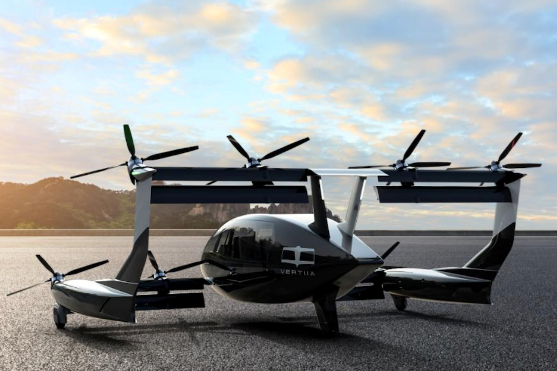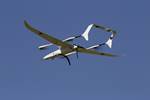Australian eVTOL aircraft Vertiia completes maiden flight
AMSL Aero takes new steps toward additional testing and CASA certification for the long-range, box-wing-designed aircraft that will aid aeromedical, cargo, emergency and regional air mobility.

Photo Credit: AMSL Aero
Australian green aerospace company AMSL Aero (Sydney) has announced that Vertiia, its efficient and long-range electric vertical takeoff and landing (eVTOL) aircraft, has successfully completed its maiden test flight.
Vertiia completed its tethered hover by remote control in the Central West region of New South Wales in strict accordance with Civil Aviation Safety Authority (CASA) regulations. The flight marks a vital milestone for the zero-emissions aircraft, which can carry four passengers and a pilot at a cruising speed of 300 kilometers per hour. Vertiia will be able to fly up to a distance of 1,000 kilometers — three times the range of any eVTOL, AMSL Aero claims. The company expects to commence deliveries in 2026 to customers in the aeromedical, cargo, emergency and regional air mobility sectors, following certification.
AMSL Aero CEO and Vertiia inventor Andrew Moore notes that it is nearly 130 years since Australian aeronautical pioneer, Lawrence Hargrave, invented the box kite, upon which the Vertiia’s distinctive “box wing” design is based. “As Vertiia lifted off, we felt the same rush of adrenaline that Lawrence Hargrave must have felt nearly 130 years ago,” Moore says. “The Vertiia prototype flew better than we expected. It was remarkably smooth and a delight to fly.”
AMSL Aero will now conduct more test flights and begin CASA certification for Vertiia, which is on display at the Avalon International Airshow in Victoria from Feb. 28 to March 5, 2023, as it continues discussions with future customers and builds a sovereign aviation capability for Australia.
According to AMSL Co-Founder Siobhan Lyndon, Vertiia will enable greater access to medical services for vulnerable remote, rural and regional communities, offering new models of care through rapid and low-cost connectivity.
“Vertiia is not only safe and quiet, but it was also developed for the harsh long-distance conditions in Australia. If it can work in Australia, it can work anywhere,” Lyndon says. “Unlike aeromedical aeroplanes that require a runway, Vertiia will carry patients directly from any location straight to the hospital, significantly reducing the complexity and time often required to transport vulnerable patients. It will also be quieter and safer than helicopters and will eventually cost as little as a car to maintain and run, transforming aeromedical transport into a far more affordable, accessible, safer and reliable option.”
Moore and Lyndon would like to thank its its team, key suppliers and contractors through Australia and investors IP Group Australia, TelstraSuper, Hostplus and St Baker Energy Innovation Fund.
Related Content
-
Plant tour: Albany Engineered Composites, Rochester, N.H., U.S.
Efficient, high-quality, well-controlled composites manufacturing at volume is the mantra for this 3D weaving specialist.
-
Welding is not bonding
Discussion of the issues in our understanding of thermoplastic composite welded structures and certification of the latest materials and welding technologies for future airframes.
-
PEEK vs. PEKK vs. PAEK and continuous compression molding
Suppliers of thermoplastics and carbon fiber chime in regarding PEEK vs. PEKK, and now PAEK, as well as in-situ consolidation — the supply chain for thermoplastic tape composites continues to evolve.
















